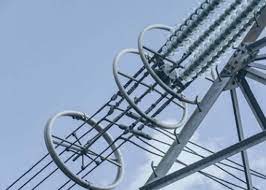In the intricate world of electrical engineering, where precision and reliability are paramount, grading rings emerge as marvels that play a pivotal role in optimizing the performance of high-voltage systems. Also known as corona rings or anti-corona rings, these unassuming components hold the key to managing electric fields, preventing corona discharge, and ensuring the seamless operation of electrical infrastructure. This article delves into the science behind grading rings, unraveling the intricacies that make them indispensable in the realm of electrical engineering.
1. Precision Electric Field Management: The Core Principle
At the heart of grading rings lies the core principle of precision electric field management. High-voltage systems, such as overhead transmission lines and electrical equipment, operate in environments where electric stress is heightened. Grading rings are strategically placed on these systems to optimize the distribution of electric fields, ensuring that the stress is managed with meticulous precision. This precise control is fundamental to preventing corona discharge and maintaining the stability of the entire electrical system.
2. Shaping Electric Fields with Design Variations
Grading rings come in various design variations, each tailored to specific applications and challenges. Whether in the form of flat rings, suspended rings, or cylindrical rings, the design is selected based on factors such as voltage levels, conductor configuration, and the desired electric field distribution. The versatility in design allows engineers to tailor grading rings to the unique requirements of different high-voltage scenarios, showcasing their adaptability and effectiveness.
3. Overcoming Corona Discharge: A Proactive Stance
Corona discharge, a phenomenon that occurs when electric stress ionizes the surrounding air, poses a threat to the efficiency and reliability of high-voltage systems. Grading rings take a proactive stance against corona discharge by shaping electric fields to eliminate high-stress regions. The even distribution of electric stress achieved by grading rings minimizes the risk of ionization, preventing corona discharge and its associated challenges, such as energy losses and audible noise.
4. Strategic Placement: Fine-Tuning for Optimal Performance
The science behind grading rings extends to their strategic placement along high-voltage systems. Engineers carefully analyze factors such as voltage levels, conductor spacing, and environmental conditions to determine the optimal locations for grading rings. Computational simulations play a vital role in this process, allowing engineers to fine-tune the design and placement of grading rings for optimal real-world performance. This strategic approach ensures that grading rings are positioned where they can exert maximum influence in shaping electric fields and preventing corona discharge.
5. Materials and Construction: Balancing Conductivity and Durability
The materials used in grading rings are carefully chosen to strike a balance between conductivity and durability. Since grading rings are conductive components, the choice of materials influences their ability to shape electric fields effectively. At the same time, the materials must withstand environmental challenges, including temperature variations, humidity, and pollution. This balance ensures that grading rings perform consistently and reliably under diverse conditions, contributing to the overall robustness of high-voltage systems.
6. Environmental Adaptability: Consistent Performance Across Conditions
Grading rings showcase environmental adaptability, operating seamlessly across diverse conditions. Designed to withstand extreme temperatures and varying levels of humidity and pollution, they ensure consistent performance in different scenarios. This adaptability reinforces the reliability of grading rings, making them essential components for maintaining efficiency in the face of environmental challenges.
7. Computational Simulations: Optimizing for Real-World Challenges
The optimization of grading rings involves sophisticated computational simulations that simulate electric field dynamics and corona behavior. Engineers leverage these simulations to analyze the performance of grading rings under various conditions, ensuring that the design is optimized for real-world challenges. This scientific approach allows for continuous improvement in the design and functionality of grading rings, contributing to their effectiveness in shaping electric fields and preventing corona discharge.
8. Longevity and Reduced Maintenance: Ensuring Reliability
Grading rings contribute to the longevity of high-voltage systems by preventing corona discharge and associated damage. The reduced wear and tear on insulators and other components translate into lower maintenance needs, ensuring sustained and reliable operation. This aspect of grading rings aligns with the overarching goal of enhancing the reliability of electrical infrastructure.
9. Future Prospects: Innovations in Grading Ring Technology
As electrical engineering continues to advance, grading rings hold the promise of ongoing innovations. Research and development efforts may lead to advancements in materials, designs, and applications, further enhancing their role in optimizing high-voltage systems. The pursuit of increased efficiency, reduced environmental impact, and enhanced reliability will likely drive the evolution of grading ring technology.
Conclusion: Grading Rings as Pillars of Precision in Electrical Engineering
In conclusion, grading rings stand as pillars of precision in the field of electrical engineering. Their role in shaping electric fields, preventing corona discharge, and ensuring the seamless operation of high-voltage systems underscores their significance. As silent architects of efficiency and reliability, grading rings exemplify the fusion of scientific principles, engineering excellence, and adaptability, making them indispensable components in the intricate landscape of electrical engineering marvels.


